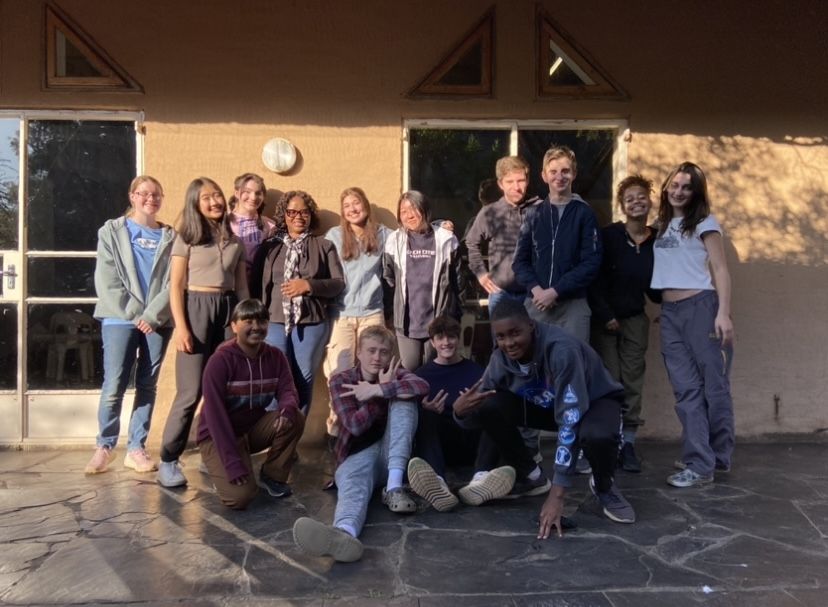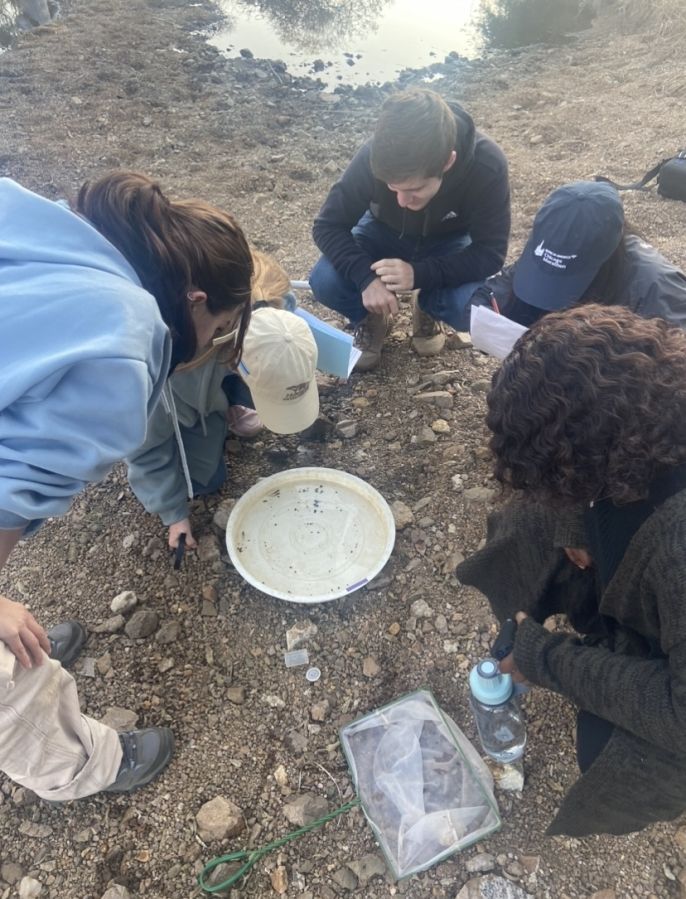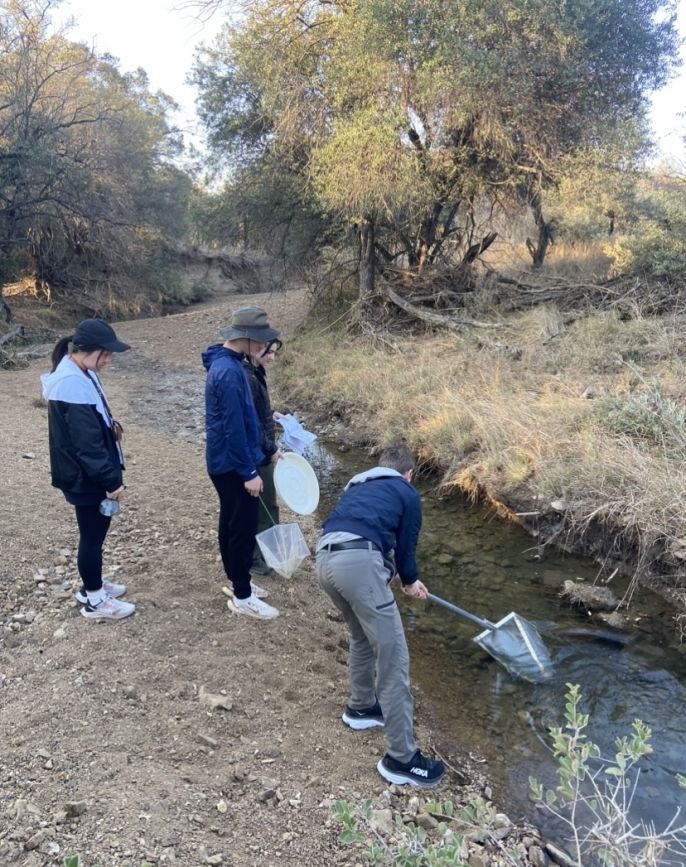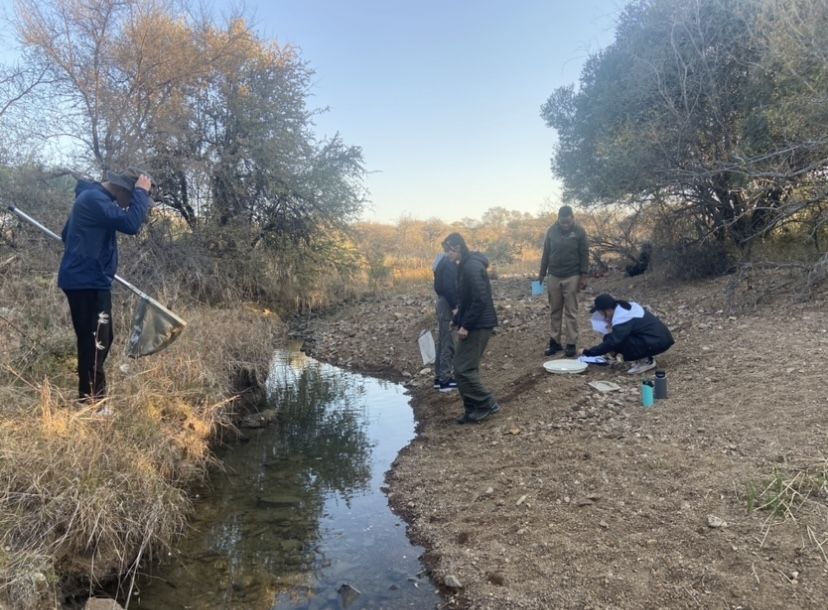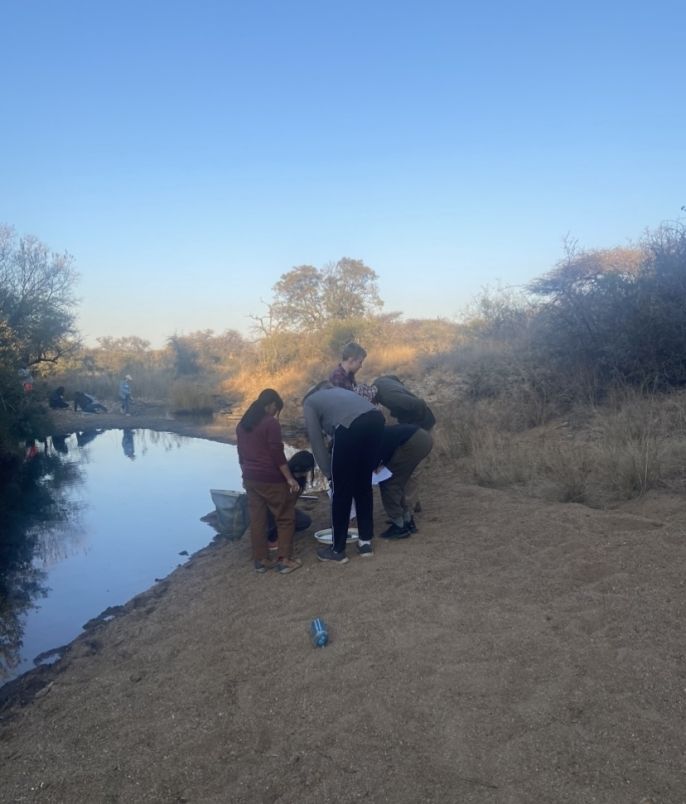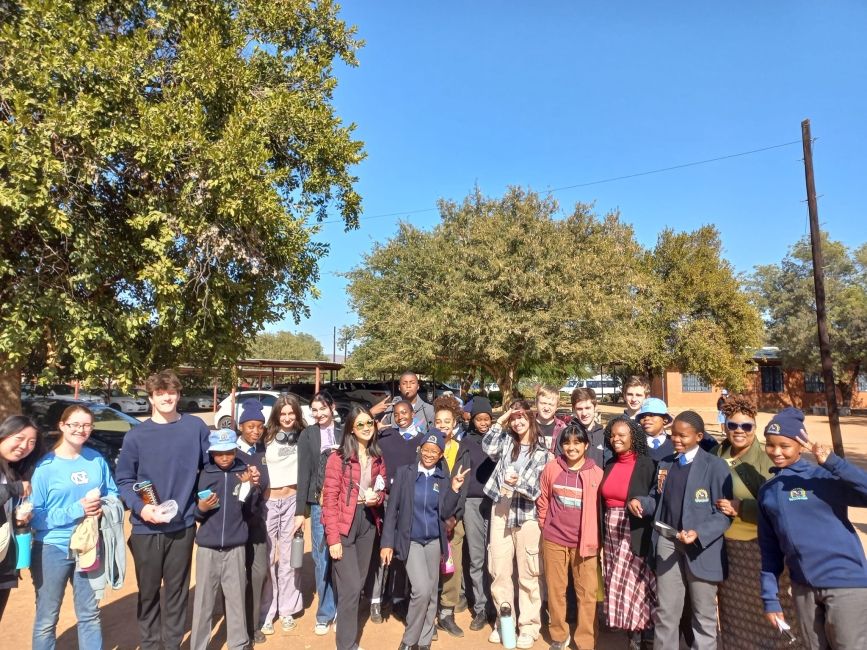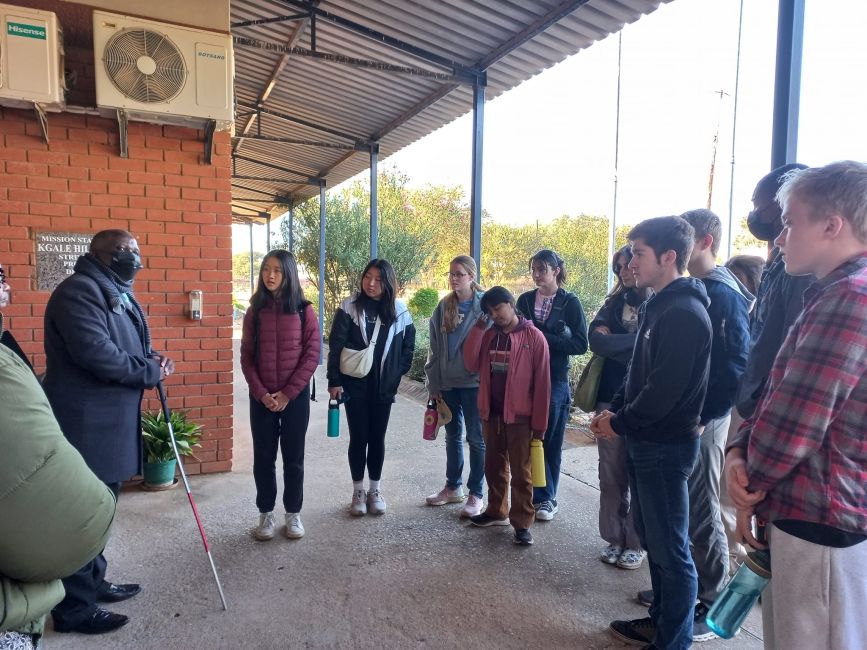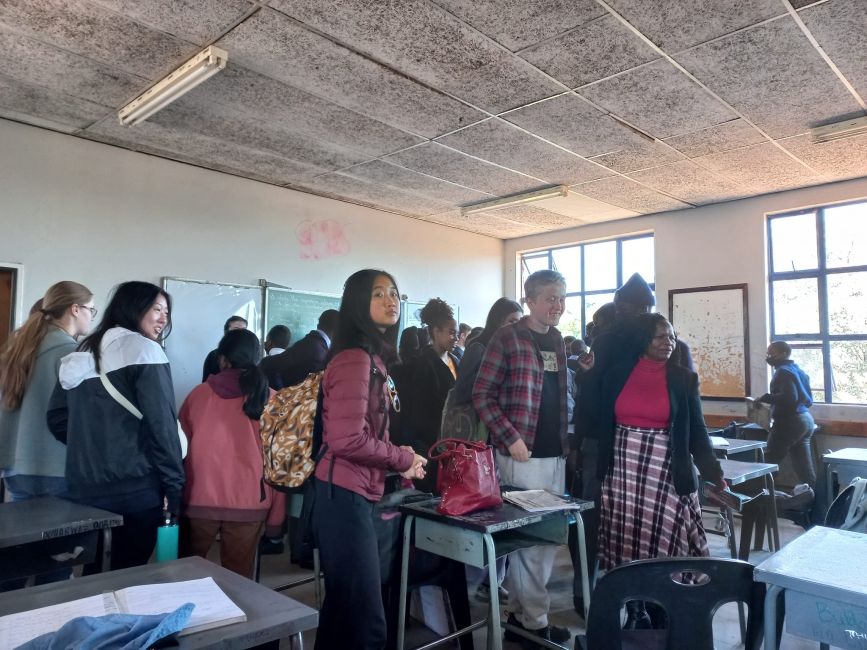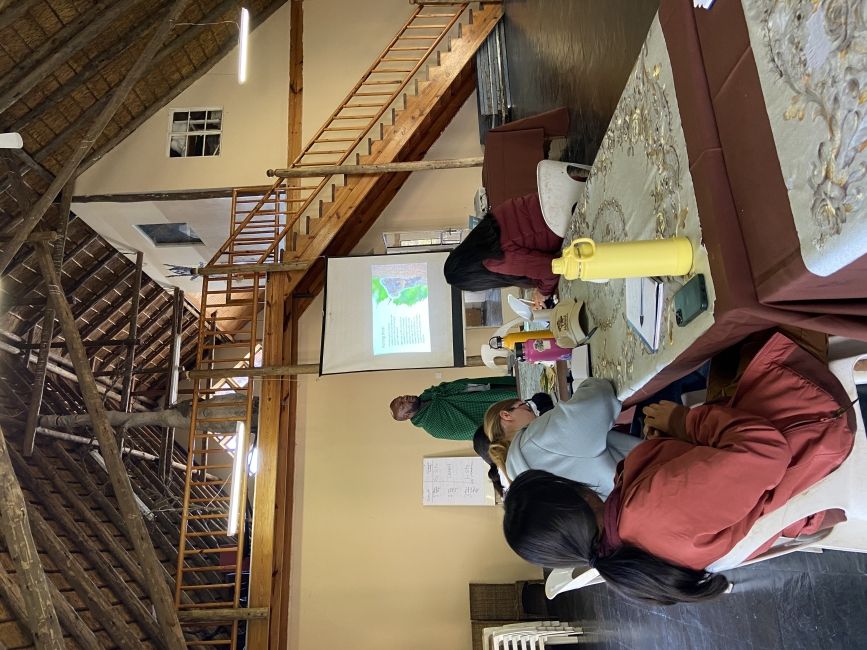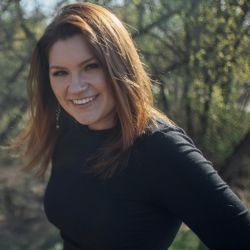Biodiversity in Botswana
What a great day to make new friends! Today our Global Navigators traveled to the Kgale public school. This differed from Legea Academy which was a private school. Our Navigators were able to compare the similarities and differences between these two schools in Botswana, and of course, their schools back home. While students were at the school, they were shown the special education department and were able to visit several different classes, like home economics, and grab snacks at the shop. It was a beautiful thing to see how our Navigators meshed so well with the local students. Everyone was getting in on photos and exchanging information before we left.
Back at Mokolodi, Navigators had a lesson on the characteristics of biodiversity in Botswana. We talked about megadiverse countries (countries with many species of plants, animals, and micro-organisms), common species in Botswana, and how to conserve biodiversity. A couple of fun facts from the lesson: Botswana has a species richness index of 9.3 and 15, about 170 known mammal species, and 616 species of bird! The Navigators also learned about in-situ (on-site) versus ex-situ (off-site) conservation. One of these methods could be more suited and beneficial to the species, depending on the situation.
After lunch, we honed our Setswana skills with another lesson. Today was focused on parts of the body. Ask the Navigators to sing “Head, Shoulders, Knees, and Toes” in Setswana! They do an amazing job with this, and a couple other songs as well.
Then we headed over to a waterhole at Mokolodi. Here, navigators collected and identified different organisms living in the water. They also tested pH levels. All giving indicators as to the health of the water.
At the end of the day they handed in two of their assignments. One of the assignments that students wrapped up today was a comparison of the Gaborone Dam and a Dam of their choosing back in their home state. They compared and contrasted the size, who the dam supports, and how much water it holds. They also turned in their posters. The instructors have been eagerly watching them work on these for the last couple of days. They turned out beautiful, and we will be bringing them to the orphanage we visit in Serowe in a couple of days. The Navigators were each able to pick an animal in Botswana, and then research their range over the years. To wrap up the night, Navigators had time to work on their final projects with groupmates
Related Posts
Final Reflections and Advice for Future Students
It is our last day here in Botswana and before all the tears began, we asked students to share some of their final reflections and thoughts. Over the past three... keep reading
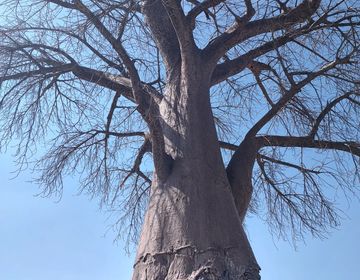
A Baobab that rose from the Okavango Delta
There are some things that are iconic to the continent of Africa- the big five, delicious food and the majestic Baobab tree. The Baobab is known as the tree of... keep reading
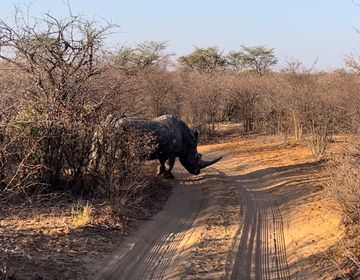
Khama Rhino Sanctuary
The first stop on our journey to the northern part of Botswana was the Khama Rhino Sanctuary; established in 1992, the sanctuary is a “community based wildlife project” aimed at... keep reading
